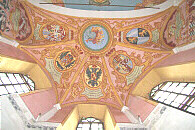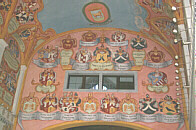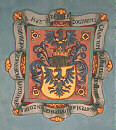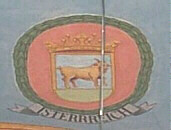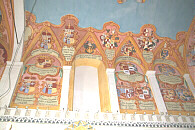| Societas Heraldica Slovenica May 2005 Ljubljanski grad Ljubljana's roots were Roman at which time it was known as "Emona". Roman relics can still be found throughout the city today. After the collapse of the Roman Empire, a number of regions
The city of Ljubljana assumed the ownership of the castle on 16 May 1905, credit to the mayor of the time, Ivan Hribar. Unfortunately, during WWI, the military used the castle as a holding area for political suspects and prison. However, the renovations of the castle was conceived by the architect Jože Plečnik, and in 1932 proposed a design that removed all previous alterations. The restoration work of the castle continue to this day. The City of Ljubljana had invested funding over the past 15 years to ensure that the Castle continues to be used actively by the local community, while also being an attraction for visitors interested in history, culture and architecture, both contemporary and historical. It is the desire to prevent the Castle from becoming a passive tourist attraction only. The wall paintings below can be found in the Chapel of St. George, located in the base of the watch tower, depicts the many coats of arms of the Carniolian provincial governors who served Ljubljana from 1221 to 1742 and the coat of arms of Carniola, Istria and Slovenska marka, originally painted in 1747. On 14 September 1489, the Emporer Frederick III established daily masses in this chapel, and since then, the chapel continues to be opened annually for a festival commemorating the patron saint. It is the only historical architectural monument in Slovenia that is embellished with the coats of arms of the Carniolian provincial governors. Many of these same arms can be found in Valvasor's "Opus Insignium Armorumque". In the presbiterium (image below, "view of the ceiling - top facing east"), contains paintings of five Hapsburg rulers ranging from the 13th century through to the 18th centuries. Click on the images below to view a larger version of the same.
*** Above photographs, courtesy of David M. Cvet, October 2005 ***
The coats of arms can be divided into three groups: the northern, western and southern walls bear the arms of 60 Governors of the Province of Carniola (today Kranjska); the arms of the five sovereigns of Austria on the vaulted ceiling of the presbytery; the third group of the arms of the Province of Carniola, the Margravate of Istria and the dominion of the Slovenian Mark. It has, however, come to light that during the course of the numerous renovations experienced by the chapel over the centuries, errors have surfaced in the presentation of arms which include incorrect dates of the arms, incorrect inscriptions below the arms, and in some cases, incorrect arms. It would appear that a combination of errors found in the sources, including Valvasor's "Glory of the Duchy of Carniola" and errors introduced by the artists/painters of the arms. Regardless of the introduction of errors over time as a result of renovations and restorations, the Chapel presents to the visitor, a beautiful pictoral representation of the history of Slovenian heraldry and is considered a national treasure. Bibliography
by David M. Cvet Avtor: , je bil rojen v Kanadi slovenskim staršem. Je direktor Kanadska kraljevska heraldična družba (RHSC) in predsednik podružnice za Toronto, predsednik in ustanovitelj Akademija evropske srednjeveške borilne veščine v Torontu. Je tudi ustanovitelj Societas Heraldica Slovenica. V začetku se je predvsem posvečal srednjeveškim borilnim veščinam in pri tem spoznal kako pomembno zgodovinsko vlogo je imela heraldika. Svoje raziskave in študij je razširil na Slovenijo. SHS Copyright © 2005 All Rights Reserved Updated: October 14, 2005 |


